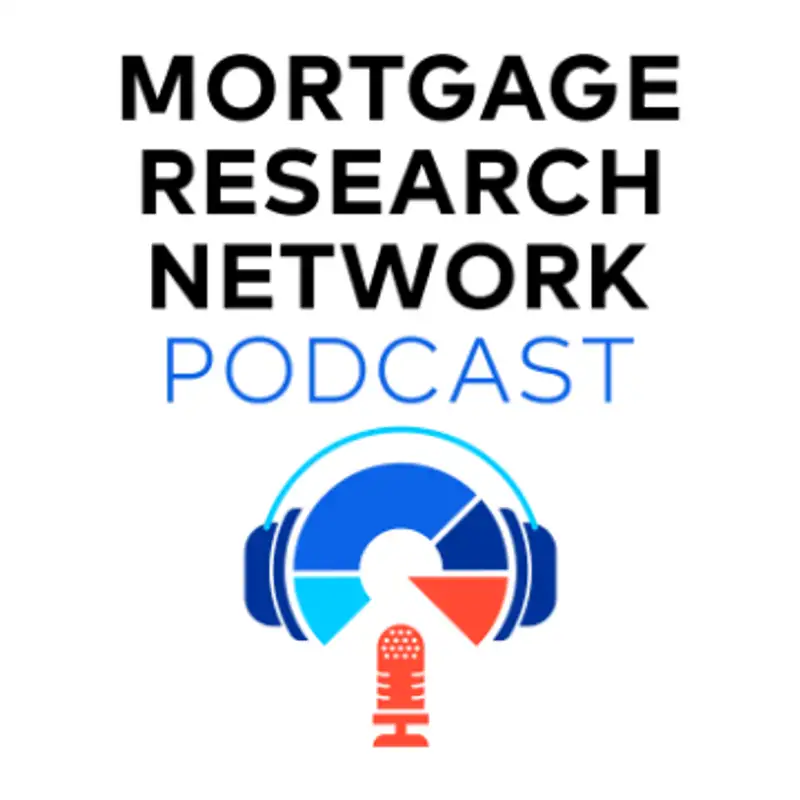Home Price Shock: When Salaries Fall Behind
Welcome to the Mortgage Research Network Podcast. Just a note that this podcast audio is AI-generated, but the article on which it's based was produced by people. Content is also reviewed for accuracy. And your hosts, Tim and Craig, are real people. Without further ado, let's get into today's topic.
I'm your host, Tim Lucas, editor of MortgageResearch.com and a former mortgage professional, and with me is Craig Berry, a mortgage originator with 25 years experience.
Hi everyone. Great to be here, Tim.
Today we're talking about affordability. And you won't have any problem guessing which direction it has gone in the past few years. In just three years, the number of major U.S. markets where median earners could afford a typical home dropped from 39 to just 11. And that's not even the most shocking part of today's housing crisis.
Those numbers really put things in perspective. And it completely destroys that old narrative about young people just needing to cut back on luxuries to afford a home.
You know, it's funny you mention that because this all reminds me of that Australian millionaire, Tim Gurner, who went viral in 2017 for suggesting millennials couldn't afford homes because of their avocado toast habits. Well, Zillow just released this fascinating study that shows even with a $73,000 down payment saved up, the average American would still need an additional $17,670 in annual income just to afford a typical home.
That's such a stark contrast to what previous generations experienced. You were recently sharing with me about a Harvard study that really highlights how this is a uniquely modern problem.
Absolutely fascinating data there. Before 2000, about 90% of homes in metro areas cost less than 3.9 times the average earnings. But now? We're looking at median home prices that are 5.6 times higher than median household income, the highest since records began in the 1970s.
And in some California markets, the situation is even more extreme. What was that figure again?
Oh, it's almost unbelievable. in four California markets, you'd need a six-figure raise just to afford the typical home. Not a six-figure salary. a six-figure RAISE. And here's what's really interesting about the current market dynamics: we're seeing this huge increase in available homes, up to over a million nationwide from just 346,000 in February 2022.
That's quite a jump in inventory. Though I imagine those locked-in low mortgage rates are complicating things.
Exactly right. Think about it. if you're sitting on a 3% mortgage from 2021, you're probably not too excited about selling and jumping into today's rates. But here's where it gets interesting: new home sales are dropping significantly, down 13.7% month-over-month in May, with the South seeing a particularly sharp 21% decline.
So what does all this mean for potential first-time buyers? Are there any silver linings?
Well, there might be some hope on the horizon. The increasing inventory and regional price corrections could help improve affordability. But we're still millions of homes short of what we need to meet demand. You know, I did some calculations about that avocado toast argument.
Oh, please tell me you crunched the numbers on that one.
Even if someone completely gave up fancy breakfasts and coffee for an entire year, they'd save maybe $2,000 which doesn't come close to making up the $17,000 annual shortfall needed to afford a home now. It really shows how these systemic issues can't be solved easily through individual spending choices.
That really puts things in perspective. We're talking about fundamental market changes that go way beyond personal budgeting.
And here's what I think is the most important takeaway from all this: while we might see some short-term improvements in certain markets, the underlying structural issues remain. This isn't just about housing. it's about the entire economic future of a generation.
Hmm... especially when you consider how homeownership has traditionally been the primary way families build long-term wealth.
Exactly. When you combine these housing affordability issues with other economic challenges like student loan debt and stagnant wages, you're looking at the potential to reshape the American dream for decades to come. The solution isn't going to come from skipping breakfast. it's going to require policy changes and rethinking of how our housing market works.
That's quite a sobering way to look at it, but it seems like understanding the true scale of the problem is the first step toward actually solving it.
You know what? Maybe that's the real value of having all this data now. it helps us move past these oversimplified explanations and focus on the actual structural changes we need to make. Because until we address those fundamental issues, no amount of scrimping and saving is going to bridge that growing affordability gap.
That's about all the time we have for this topic, but we go into even more detail on the site. To learn more, go to Mortgage research.com and type harvard study in the search bar on the homepage. We'll see you next time on the Mortgage Research Network Podcast.
